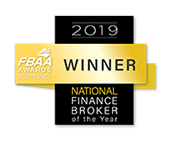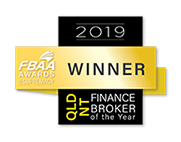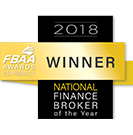Are you dreaming of expanding your property portfolio or upgrading to a larger home? The answer might be right under your roof!
In this comprehensive expert-written guide, you’ll learn everything you need to know about buying a second home and renting the first—from using equity to buy a second home to what you need to pay in stamp duty.
Whether you’re a growing family looking for more space, a savvy investor aiming to build wealth, or simply ready for a change of scenery, understanding how to leverage your home’s equity can open doors for you!
So, if you want to learn how to buy a second property with no deposit, you’ll love this guide.
Let’s dive right in.
How Equity Works In Australian Property.
Equity refers to the difference between the value of your home and the amount you owe on your loan. For banks, this difference, along with their safety lending margin, determines how much you can borrow. For instance, if your home is valued at $1 million and you owe $500,000, a bank allowing an 80% loan-to-value ratio means that you could potentially borrow up to $800,000, which, in this example, means you have access to $300,000 in equity.
You can utilise equity for various purposes, such as installing a swimming pool, buying a car, and, most commonly, buying an investment property. Many investors leverage this strategy to acquire another property without needing another deposit, effectively borrowing the entire purchase price plus associated costs.
If you’re thinking about using your equity for any major purchases, get in touch with the team here at Hunter Galloway – Mortgage Broker Brisbane. We can do a quick assessment and help you to make your equity work for you.
Why You Would Use Equity To Buy A Second Property?
You might be expecting a baby in the next few months, and your house is getting too small for your growing family, so you need something bigger…
You could be with a partner, thinking about the next stage of your life and wanting to buy a house together.
Or you may be moving interstate for work and want to keep your existing home as an investment property.
Whatever the reason, your first home isn’t often your forever home, and you will eventually get to the point of upgrading your home.
While you might not have the cash for a deposit, you have something much more powerful: equity in your home.
How Does Equity Work When Buying A Second Home?

If you have owned your property for over 5 years, you may have gained equity.
You can tap into this equity to create a bigger deposit for your second property and increase your overall budget.
Let’s go through an example of how equity works when buying a second home…
Karen bought her first home 6 years ago for $305,000 in Brisbane with a loan of $250,000.
Since Karen bought her home, she met Dave, fell pregnant, and now wants to move into a bigger home in a better school catchment area.
We got her first home valued today at $500,000, and Karen owes $250,000.

The awesome news is that Karen now has $250,000 equity in her first home, meaning she can withdraw up to $150,000 in home loan equity.
This $150,000 home loan equity can be used as a deposit on her second home.
Here we work through some of the numbers:
| 1st Home | 2nd Home |
Property Value Existing Loan | $500,000 $250,000 |
|
Maximum Lending (80%) | $400,000 ($500,000 x 80%) | (Your value x 80%) |
Maximum new equity loan (which can be used as a deposit) | $150,000 ($400,000-$250,0000) | (Existing loan – new loan) |
Read More: Equity Calculator: How to Work out Your Usable Equity?
How To Buy A Second Property With No Deposit
You might have an existing home and be wondering: Can I use my property to buy a second home?
To qualify to buy a second home with no deposit, you need the following:
- To have equity of 10-20% in your existing property
- Ideally, owe under 80% of your existing property value
- To have a clean repayment history
- Be currently working or be employed
- Have a clean credit file
Let’s look at Karen’s example again.
If Karen and Dave wanted to buy a second home and didn’t own an existing one, they would need a cash deposit and savings to get the new place.
But Karen can get a loan against the $250,000 in equity available in her first home and put an 80% loan against this to take out $150,000 in new lending.
1st Home | 2nd Home | |
Property Value Existing Loan | $500,000 $250,000 |
|
Maximum Lending (80%) | $400,000 ($500,000 x 80%) | (Your value x 80%) |
Maximum new equity loan (which can be used as a deposit) | $150,000 ($400,000-$250,0000) | (Exiting loan – new loan) |
Total Loans | $400,000 ($250,000 + $150,000) | (Existing Loan + New Loan) |
($250,000 + $150,000) (Existing Loan + New Loan)
This $150,000 can be used as a deposit to buy a second property!
In other words, Karen doesn’t need any cash or savings as a deposit. She can use the equity in her 1st property to purchase a 2nd home.
Can You Buy A Second House And Rent The First One?
If you want to buy a second house or upgrade your first home, you might be wondering: can I rent the first?
The good news is, yes, you can! Let’s look at Karen’s situation again.
Karen has found a second home to buy for $700,000.
The plan is to keep her first home as an investment property and live in the second home.

So Karen wants to rent her first property while she lives in the 2nd one.
|
| |
| 1st Home | 2nd Home |
Property Value Existing Loan | $500,000 $250,000 | $700,000 NA |
Maximum Lending (80%) | $400,000 ($500,000 x 80%) | $560,000 ($560,000 x 80%) |
Maximum new equity loan (which can be used as a deposit) | $150,000 ($400,000-$250,0000) |
|
Total Loans (she only wants to borrow up to $140k for deposit) | $390,000 ($250,000 + $140,000) | $560,000 |
How much needed to buy 2nd home? |
| $140,000 + Costs ($700,000-$560,000) |
How much available? | $150,000 |
|
Equity left over | $10,000 |
So, yes, you can rent out the first home. In fact, the banks might use the rental income from your 1st house towards your overall income.
It can also give you access to tax strategies like Negative Gearing.
Read More: What Is Negative Gearing? Here’s a Simple Plain English Answer
How Do You Keep Your Old Home As An Investment And Rent It Out?

There could be tax benefits for renting and keeping your old home as an investment property.
Note: If you want tax advice, you must speak to your accountant.
But the steps involved in renting out your old home and keeping it as an investment are:
- Calculate how much equity you have in your first home: Equity Calculator
- Calculate how much rental you can get on your existing home: Rental Research Tips
- Make sure you have enough equity/deposit: Deposit Calculator
- Check what your stamp duty costs might be: Stamp Duty Calculator
- Check if you can afford the repayments on your existing home plus the new home: Calculate your repayments
- Speak to a mortgage broker about your situation: Get a free assessment
If you want to speak with someone about your situation, call our Home Loan Experts on 1300 088 065 or complete an Online Assessment to see your options.
Read More: How much home can I afford?
Can We Afford A Second Property?
While it might be possible to buy a second home, you might be looking at how much debt you are about to get yourself into and asking: can we afford the second property? This is ultimately going to come down to your income and cash flow, but here are a few things to consider:
- Calculate how much the total repayments will be versus your total income.
- Estimate what your rental expenses might be.
- Try to maintain a safety buffer.
Case Study: Estelle's new baby (and home)

Estelle is 32 weeks pregnant and has been looking for a new home for her family for the past 8 months.
She finally found the perfect home but isn’t sure if she will qualify for a loan.
She plans to take 5 months off after the birth of her new baby and then go back to work.
| 2nd Home | |
Property Value | $300,000 | $650,000 |
Loans | $240,000 | $520,000 |
Repayments (per month) | $900 | $2,500 |
Other Costs | $200 (agent, rates) | $300 (rates, electricity) |
Income (per month) now | $800 (rental) | $7,000 (combined salary) |
Surplus (or shortfall) | ($300) | $4,200 |
Total surplus |
| $3,900 |
Now, let’s look at the income while Estelle is on maternity leave.
Repayments (per month) | $900 | $2,500 |
Other Costs | $200 (agent, rates) | $300 (rates, electricity) |
Income (per month) now | $800 (rental) | $3,000 (one salary) |
Surplus (or shortfall) | ($300) | ($200) |
Total shortfall (per month) |
| ($500) |
Estelle thinks she will have 5 months off work, but we suggest having a bit of a buffer to ensure you have enough money put away for a bit extra.
So let’s assume 6 months off x $500 shortfall = $3,000 buffer. Plus, you want to add some living expenses.
So, if you have a baby, try to estimate how much time you’re having off and build a safety buffer for this.
Read More: Buying a Home While Pregnant or on Maternity Leave
What Is The Best Loan Structure?
There are two main ways to access your equity. The first is through a cross-securitisation loan, and the second is a standalone home loan. Let’s take a look at how each works.
Cross-collateralised
Cross-collateralisation, also known as cross-securitisation, is a loan structure in which a loan or loans are secured by two or more properties. This approach allows borrowers to finance the entire purchase price of a property, providing equity permits.
Imagine you’re interested in buying an investment property worth $500,000. Luckily, you already own a home outright valued at a million. Without the use of equity, typically, you need to provide the bank with a minimum 20% deposit plus additional monies for such things as stamp Duty. However, because you own your home— by cross-securitising both properties, you can borrow the entire purchase price plus the additional costs such as stamp duty. This means you could borrow $525,000 to cover all the costs, including the purchase price. This loan amount would be secured by both properties — that’s, both the existing property and the intended purchase property.
In this example, we have two properties valued at $1.5 million. The first is an investment property we acquired for $500,000, and the second is the existing home we own for $1 million. Through cross-collateralisation, the bank now holds a combined value of $1.5 million in properties, and in this scenario, we are only borrowing $525,000. Based on our equity position, your loan-to-value ratio would be roughly 35%.
The major downside to cross-collateralisation is that it can limit your future options. For example, if you want to sell your existing home late, you will need to revalue your new home at that point, and if the valuation comes in lower, you might OWE the bank more money.
The main benefit of cross-collateralisation is that banks sometimes give you sharper interest rates.
Crossing your properties within your structure can have pros and cons, so we suggest speaking with a Mortgage Broker to determine what is best for you.
To discuss your situation, contact our Mortgage Brokers on 1300 088 065 or fill in our free online enquiry form to get a callback.
Standalone securities
Unlike cross-collateralisation, where multiple properties secure a loan, standalone securities focus on securing loans with single properties.
Let’s use a previous example to illustrate this. In this scenario, you would need to have two loans instead. The first loan is $400,000, which is secured against the investment property valued at $500,000. This loan represents 80% of the property’s value and, by doing so, allows you to avoid paying mortgage insurance.
The second loan of $125,000 would be secured by your home, and, as before, you would still be borrowing a total of $525,000. But rather than being one loan secured by two properties, you have two loans separately secured by two different properties, allowing you to use two different banks if you so desire.
Both cross-securitisation and standalone home loans allow you to access the equity in your property, but they do it in two different ways.

Will The Bank Refinance The First Loan And Combine The Two?
You will want to talk to the bank or your Mortgage Broker about this before you sign any forms.
In a cross-collateralised structure, the bank will look at combining both loans and properties.
Let’s look at the cross-collateralised example:

The problem with this structure is if you go to sell your first home down the line, the bank can ask you to get a new bank valuation.
A better structure would be like this.

The 1st home and 2nd home would be standalone secured, meaning you could sell or refinance either and not need to get new valuations. So, if the market were to change, you’d be protected.
Should I stay with my current lender or refinance?
While different rates and products have an effect, the valuation makes the largest difference.
We have seen valuations make or break buying a second property.

For example, we recently helped this client, and we managed to get them a $130,000 increase in their property valuation by looking at another bank.
Assuming an 80% LVR loan, that is $104,000 in additional home loan equity they used towards buying a second home.
| Difference | |
Bank Valuation 1 | $640,000 | – |
Bank Valuation 2 | $640,000 | – |
Bank Valuation 3 | $770,000 | $130,000 |
Read More: How to Challenge a Bank Valuation
Am I Required To Pay Mortgage Insurance?
Yes, you could be, depending on the valuation of your first home. If your lending is over 80% LVR, you would need to pay lenders mortgage insurance
How To Access Equity
To tap into the equity in your home, you have two primary options: refinance your mortgage or increase your current loan through a top-up application. Refinancing involves switching your mortgage to a different provider, while a top-up means you stay with your current bank but increase your loan amount.
The initial step in both processes is to get your bank to complete a valuation, which will ultimately determine how much equity is available in your home. It’s important to note that the banks use various third-party valuation firms to assess your property’s value. Companies like Heron Todd White, CBRE, and JLL are a few of the third parties that the banks use. Since these firms are independent of the banks, the same firm may conduct valuations for different banks, potentially leading to an identical valuation outcome regardless of the bank.
So, if you want to maximise the equity release, consider obtaining several valuations simultaneously. A skilled mortgage broker can facilitate this, helping you identify suitable lenders and arrange for cost-free valuations. After receiving the bank’s valuation, you’ll know how much equity you can access.
Read more: How to challenge a bank valuation.
Lenders Requirements For Accessing Equity
To access equity, you must apply for financing via a home loan application. However, complexities can arise because each bank adheres to its own set of equity release policies. For example, say you have $100,000 in accessible equity you want to withdraw. This scenario is commonly referred to as a cash-out home loan, and Banks scrutinise these very closely, especially when the cash-out amount exceeds $50,000.
In these cases, you may require evidence of the intended use. For example, the bank may ask for a purchase invoice if you’re looking to buy a car using equity in your home. Each bank’s approach to this situation varies significantly. A great mortgage broker can streamline this, connecting you with lenders whose requirements align with your circumstances, possibly even bypassing the need for such evidentiary information.
Bonus: How To Create Home Equity Faster
- Get a second (or third) valuation from a different bank. This is the simplest and most overlooked way of creating equity in your home. Different banks use different valuers, so getting a valuation from another bank can increase your equity by up to $100,000!
- Have a bigger deposit. If possible, you can put down a larger deposit and get equity from the very beginning. If you put more than 20%, you can also avoid lenders mortgage insurance.
- Get a shorter loan term. Most loan terms are 30-year terms, which most banks default to. But if you get a shorter term, like 25 or 20 years, you will be able to build equity much faster.
- Make extra repayments. If you don’t want to shorten your loan term, you can make extra repayments. Even the smallest amounts can help you increase your home equity faster!
- Use lump sums and windfalls. You can use yearly bonuses and tax returns to make lumpsum payments on your loan. You could even sell some items you have lying around the house.
- Fix up your property. Simple landscaping, painting, and even changing doorknobs are affordable ways to increase your home equity.
- Use one partner’s income. If you have a partner, you can dedicate 100% of one person’s income towards the mortgage and live off the second income. Of course, this involves sacrifices, but it will help you build equity faster.
Bonus: Does Equity Increase Borrowing Capacity?
A common question we get asked often is: If I have a lot of equity in my home, why can’t I borrow more money? The answer lies in understanding that equity is not the same as borrowing capacity. Lenders analyse two key factors when considering your loan application: your capacity to repay the loan and the collateral you offer.
Firstly, they assess your borrowing capacity by calculating your income minus expenses. Essentially, the higher your income and the lower your expenses, the more you can borrow. Suppose you have $2 million in cash, which means you have ample collateral but no income. While you may satisfy their collateral criteria, in the absence of income, your borrowing capacity is nil, ultimately meaning that, in this scenario, the bank would be unable to assist you with a loan.
Secondly, collateral plays a critical role. This includes savings, deposits, equity, and property. Imagine you earn a million a year but lack collateral. That means you don’t have a deposit or equity despite having a huge income and high borrowing capacity. Banks couldn’t lend you any money because you actually don’t meet their collateral requirements.
In both scenarios, it’s clear that collateral and capacity are essential for the loan to be approved by the bank. This highlights how critical both are, and it doesn’t necessarily mean that the more equity you have, the more the bank can lend to you.
How to Buy A Second House
Remember, every home loan situation is different, and you need an expert to help you with your situation.
Our team of home loan experts at Hunter Galloway is here to help you buy a home in Australia. Unlike other mortgage brokers who are just one-person operations, we have an entire team of experts dedicated to helping make your home loan journey as simple as possible.
If you want to get started, please give us a call on 1300 088 065 or book a free assessment online to see how we can help.

More resources for homebuyers:
Looking for more resources for homebuyers? We’ve got you covered. Here are a few we’d recommend you read next.









 Start again
Start again









